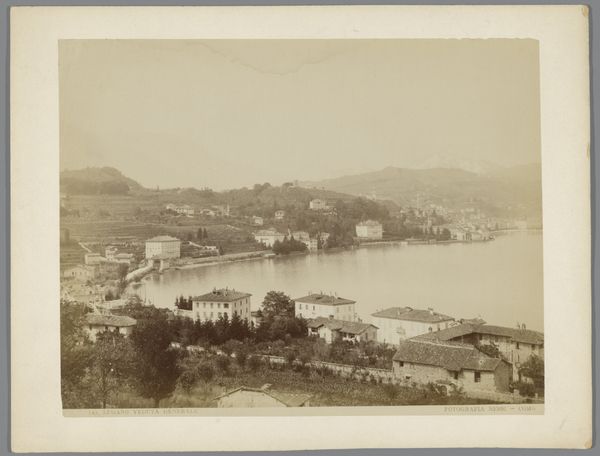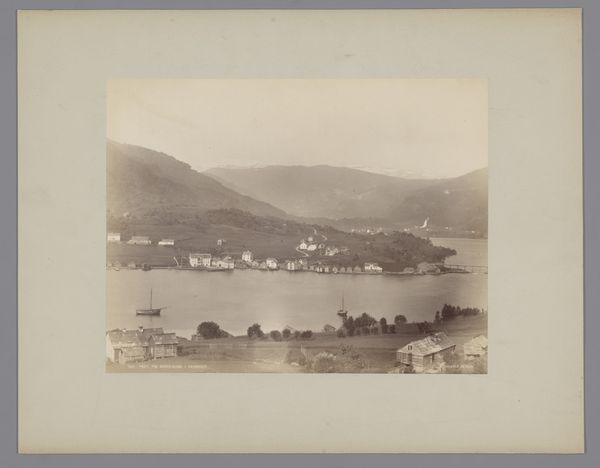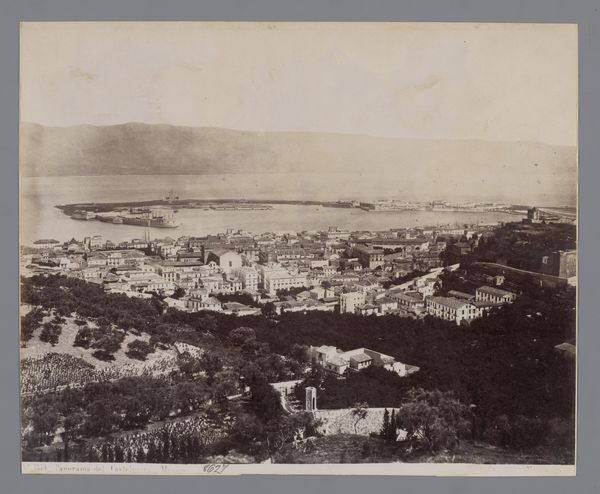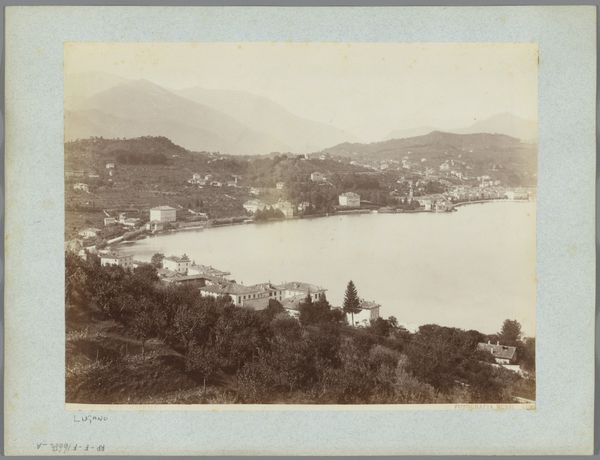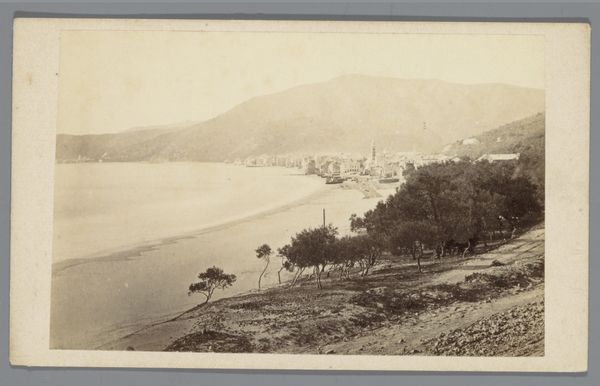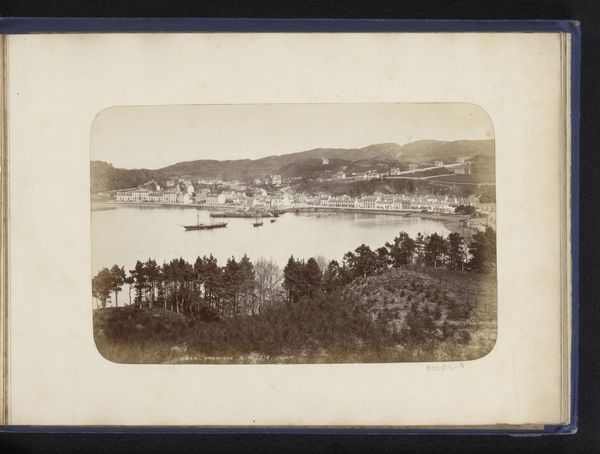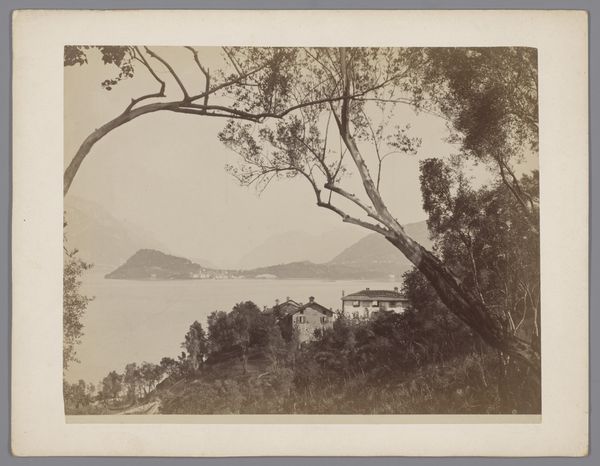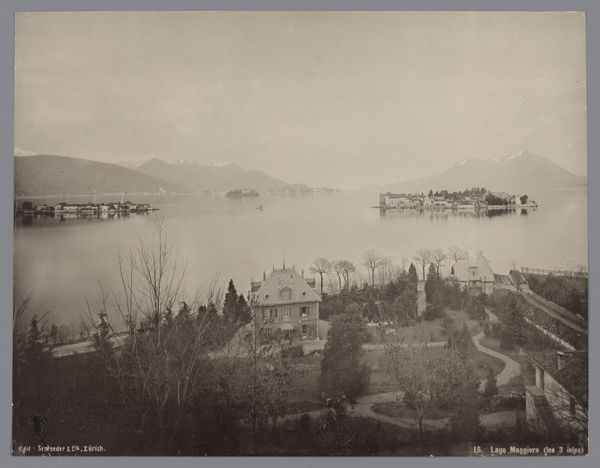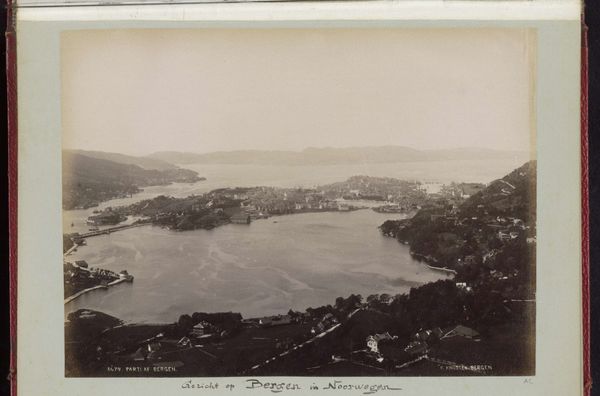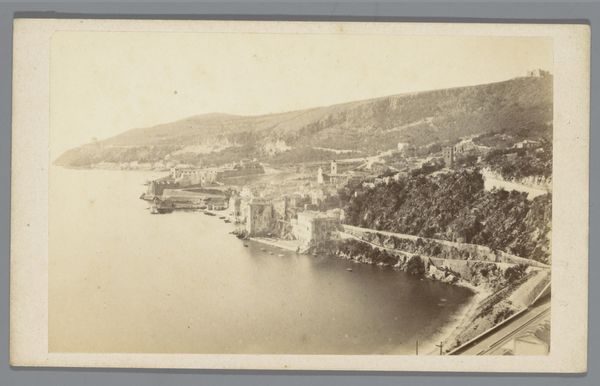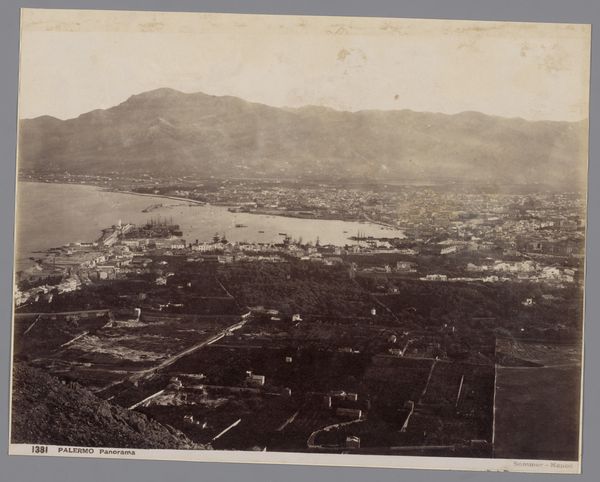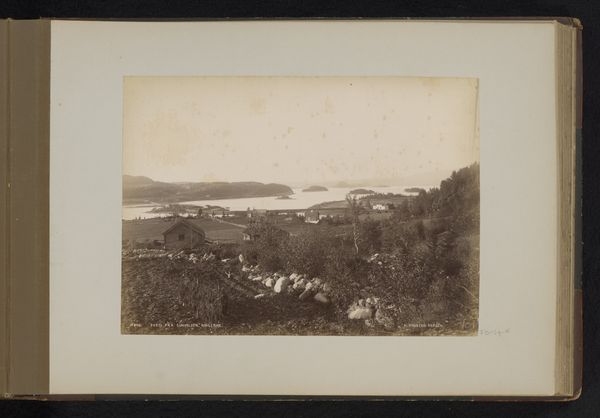
photography
#
pictorialism
#
landscape
#
photography
#
cityscape
Dimensions: height 161 mm, width 216 mm
Copyright: Rijks Museum: Open Domain
Editor: This photograph, "Gezicht op Molde in Noorwegen" by Knud Knudsen, was taken in 1888 and is a cityscape rendered through photography. It evokes such a tranquil feeling... What catches your eye when you look at this? Curator: My attention is immediately drawn to the materiality of this photographic print. Consider the process: the collodion or gelatin silver emulsion applied to the paper, the careful control over exposure and development in the darkroom. It wasn't just about capturing a pretty view; it was a complex process of material manipulation and craft. Editor: So you're saying the medium itself is a central part of the artwork? Curator: Absolutely. Look at how Knudsen uses the long exposure to create this overall softness and pictorial effect. Think about what was required to produce that level of detail. Pictorialism wasn't simply about imitating painting; it was an argument for photography as a handcrafted art form, challenging industrial mass production of imagery. The final print then becomes not only an image, but a handmade item existing within a certain commercial climate. Editor: That’s fascinating. I never considered photography in terms of labor and industry, but now I'm realizing it takes a lot more than just pointing and shooting. Curator: Precisely! Consider how photographs were consumed back then. They served commercial interests. People purchased these cityscapes as souvenirs. Also, photographers who chose to imbue a personal aesthetic, as Knudsen does here, had to reconcile artistic integrity and sales. Editor: I see that connection much clearer now. Thanks to your perspective, I learned a lot about how artistic vision intertwines with process, material conditions, and how the craftsperson/artist navigated industry to share and potentially commodify their vision! Curator: Indeed. Paying attention to how artists actively chose material production processes helps expand art history narratives in general.
Comments
No comments
Be the first to comment and join the conversation on the ultimate creative platform.
